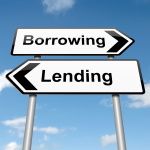 In the year leading to March 2015, the SMSF sector grew to a market value of $595 billion. This was 10% growth and followed an even robust 13%, registered by SMSF in the year-to-March 2014.
In the year leading to March 2015, the SMSF sector grew to a market value of $595 billion. This was 10% growth and followed an even robust 13%, registered by SMSF in the year-to-March 2014.
In absence of prudential regulations and a host of unregulated financial products floating in the sector, the SMSF industry has been rather volatile. This, however, is expected from a new industry. This said, their toehold in the financial sector has only strengthened with time.

 Unless you plan your estate carefully, your inheritors may feel the pinch with death benefit taxes on a later day. Officially, Australia abolished inheritance taxes in the 70s but unofficially, they have been existing, just as stoutly, ever since. The government has changed the name from “death duties” to “death benefit taxes” but they aren’t fooling anyone here.
Unless you plan your estate carefully, your inheritors may feel the pinch with death benefit taxes on a later day. Officially, Australia abolished inheritance taxes in the 70s but unofficially, they have been existing, just as stoutly, ever since. The government has changed the name from “death duties” to “death benefit taxes” but they aren’t fooling anyone here. Few things in our lives are both crucial and complex. The business decision, whether to shift the SMSF interest to a trust or a company falls in this category and how well the professional you have hired plans it for you will determine the strength of your fund.
Few things in our lives are both crucial and complex. The business decision, whether to shift the SMSF interest to a trust or a company falls in this category and how well the professional you have hired plans it for you will determine the strength of your fund. Valued in the market at $17 billion, AMP has further enhanced its reputation by assuming full ownership of technology providers, Super IQ and SuperCorp. An article in the Business Day section of the Sydney Morning Herald talks about AMP’s consolidation of its position as the leader of DIY Super Fund administration.
Valued in the market at $17 billion, AMP has further enhanced its reputation by assuming full ownership of technology providers, Super IQ and SuperCorp. An article in the Business Day section of the Sydney Morning Herald talks about AMP’s consolidation of its position as the leader of DIY Super Fund administration. Buoyed by the clarification from the central government, a higher number of SMSFs are likely to invest in properties, feels Jonathan Street, CEO of commercial lender Thinktank. An article on the online magazine Your Investment Property sheds light on the topic.
Buoyed by the clarification from the central government, a higher number of SMSFs are likely to invest in properties, feels Jonathan Street, CEO of commercial lender Thinktank. An article on the online magazine Your Investment Property sheds light on the topic. I came across an article on The Motley Fool where writer Christopher Georges discusses the value of diversification and allocating at least 5-15% of the portfolio in small-caps that can outperform the market average.
I came across an article on The Motley Fool where writer Christopher Georges discusses the value of diversification and allocating at least 5-15% of the portfolio in small-caps that can outperform the market average.